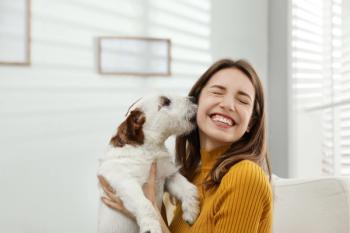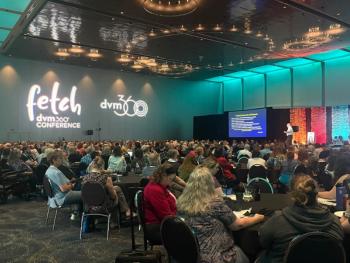
AVMA implements strategic plan
Leaders narrow association's direction to five key areas
SCHAUMBURG, ILL. — The American Veterinary Medical Association is cementing a strategy to address five key areas pertaining to the profession: advocacy, veterinary work force, education, animal welfare and economic viability.
Association leaders released an outline of AVMA's directives last month during the House of Delegates' Winter Session in Schaumburg, Ill. The goals, developed by the group's Strategic Planning Committee in 2006, are designed to guide AVMA on profession-related issues. The list was tweaked last June, and in November draft objectives for each goal were identified and presented to Executive Board members.
Officials intend to start implementing the strategy in May, and promote it through 2010.
It's an ongoing process, AVMA Executive Vice President Ron DeHaven says.
"I firmly believe there is no such thing as a status quo in organizations," he told delegates in a speech. "They're either improving or they're declining because they are not changing with the environment but rather reacting to it."
Various activities are being pushed to promote each of AVMA's strategic goals and directives. While DeHaven notes they are in a draft stage awaiting cost figures and the Executive Board's final approval, the tactics, he says, are designed to be specific, measurable, achievable, relative and time-bound.
Here is the list:
Advocacy: AVMA, through its members and leaders, is committed to be a leading force and advocate on veterinary-related issues in local, state and international legislation and regulation.
- Improve veterinary medicine's ability to lobby effectively at state and federal levels.
- Educate stakeholders on key issues through the use of contemporary communications techniques.
- Make AVMA policies more relevant and accessible to staff, leadership, AVMA members and the public.
- Engage the broadest possible base of support in AVMA's governmental relations activities.
- Increase size and optimally leverage AVMA Political Action Committee dollars to advance the association's federal legislative and regulatory goals.
Veterinary work force: Critical shortages in veterinary work force, infrastructure and resources are identified and solutions developed in collaboration with key stakeholders to ensure that national veterinary needs, including those with global implications, are met.
- Identify critical shortages in the veterinary work force, infrastructure and/or resources.
- Develop solutions to critical shortages in the veterinary work force, infrastructure and/or resources.
- Implement solutions in collaboration with key stakeholders.
Education: The AVMA Council on Education accreditation process is the premier standard for veterinary medical education globally.
- Ensure continual improvement and best practices in AVMA's accreditation process.
- Maintain Council on Education leadership and visibility in international veterinary education.
- Ensure AVMA's foreign graduate certification program remains rigorous and in step with accreditation standards.
- Market/promote the value of AVMA's educational accreditation programs.
- Develop direction for the future of veterinary medical education in collaboration with key stakeholders.
Animal welfare: AVMA is a leading advocate for and an authoritative, science-based resource on animal welfare.
- Integrate and expand AVMA's science-based knowledge on animal welfare.
- Engage AVMA leaders to empower the AVMA to become a resource and advocates on animal welfare.
- Strengthen the AVMA's position as a primary resource for the veterinary profession and key stakeholders about animal welfare.
- Engage the broadest possible base of stakeholders and advocate AVMA's positions on animal welfare.
Economic viability: The veterinary profession's economic viability and sustainability is evaluated and strengthened within all segments.
- Develop measures of economic viability and sustainability.
- Expand the development and strategic use of veterinary economic data.
- Strengthen the demand for veterinary services.
- Increase the productivity and efficiency in delivery of veterinary services.
- Increase the number of graduate veterinary technicians in the United States to meet veterinary service needs.
- Eliminate non-market-based pay inequities in the profession.
Newsletter
From exam room tips to practice management insights, get trusted veterinary news delivered straight to your inbox—subscribe to dvm360.




